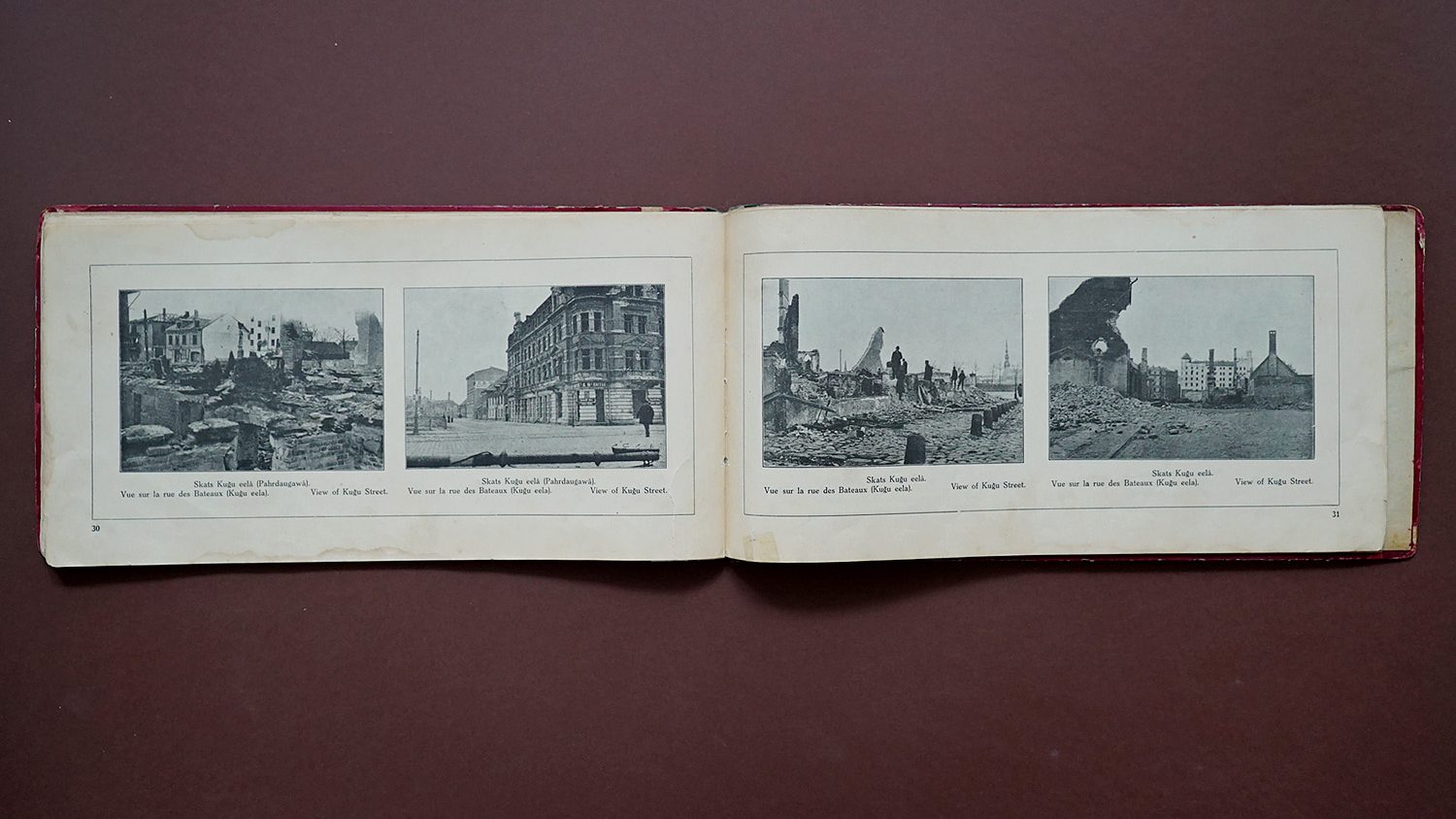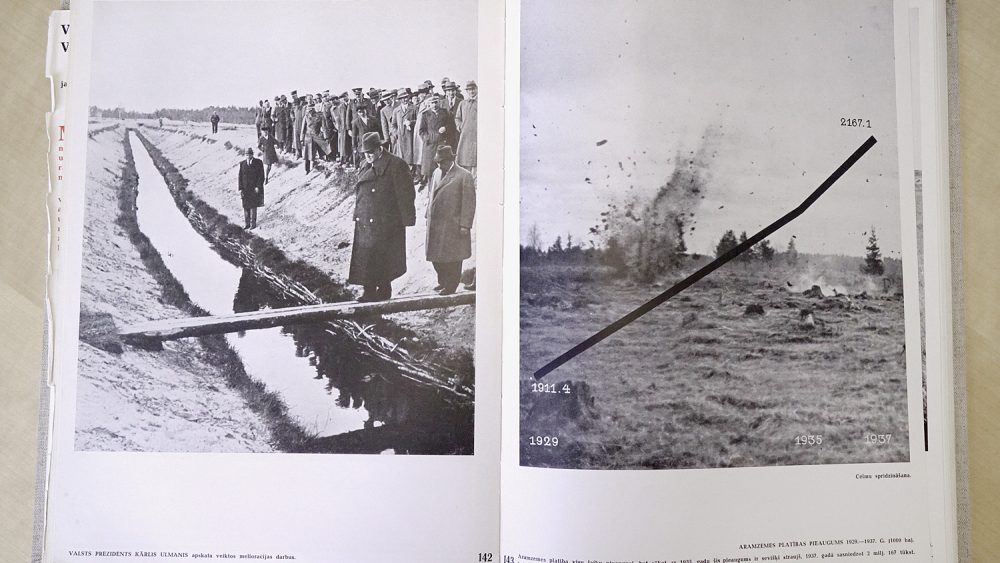Latvian photobook: Devastated Latvia
FK continues to introduce readers to the most interesting historical photography books in Latvia: this time we will look at the photo album Ispostitá Latwija or Izpostītā Latvija (Devastated Latvia), published in 1920.
This is definitely one of the first photo albums issued in independent Latvia and it could be defined as a very peculiar postcard album. The book consists of 40 pages and around 50 photographs. The authors of these photographs have focused on locations in Riga, which have been destroyed by warfare – beginning with the ruined buildings on the streets of the old town and ending with the collapsed bridges over the river Daugava. Riga had suffered a lot of damage not only during World War I, but also due to the attacks of the Bolshevik and Bermont armies in 1919. The book, printed on comparatively thin paper by the Valstspapīru spiestuve, contains many unique shots, for example, the looted rooms of the Art Museum with lopsided paintings on the walls, or views from Kuģu Street in Pārdaugava, which underwent even more dramatic changes after World War II. We are used to seeing albums emphasising the beautiful and the aesthetic, but in this edition the photographers have examined the surrounding desolation. The motivation for the book can be guessed from the foreword – “With the work and energy of the Latvian nation a new Latvia – free and independent – will be built on ruins.” Therefore, the book can be regarded as a catalyst for a new identity and not so much a fetishization of ruins.
The book was published by the Vilis Olavs Foundation. Olavs (1867–1917) was a popular Latvian activist, advocate of human rights, idealist and publicist, who played an important role in the self-confidence boosting of the Latvian intelligentsia. After his death, a foundation was established. It issued Olavs’ writings and maps and in the 1930s took over the magazine Burtnieks (something similar to The New Yorker), etc.
The author of the photographs is Aleksandrs Mednis, whom we know as Vilis Rīdzenieks (1884–1962) – a Latvian photographer who actively documented the processes of Latvia’s independence. The book also contains some photographs from the Art Museum, whose author is Jānis Rieksts (1881–1970), who was one of the most outstanding portrait photographers in Latvia at the time. Both photographers had their own studios, and they were commissioned for a wide range of photographic work.
In the foreword to the book (in three languages – also in English and French, but significantly – not in German) we can read about future plans to issue similar books on other regions in Latvia; however, the libraries of Latvia provide information that this has not happened. We can only guess whether it was a question of resources or a desire to turn the next page of history.



